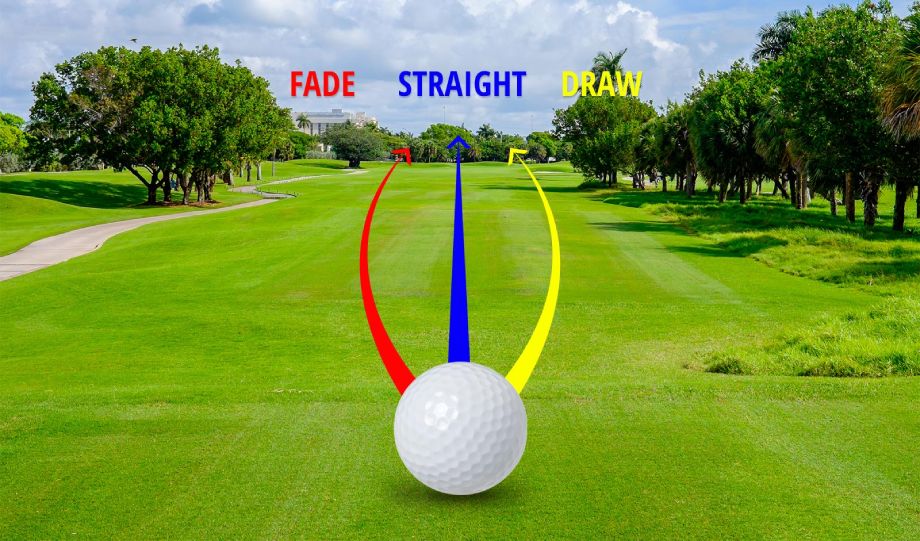What is a Draw in Golf?
In golf, a draw is a shot that curves gently from right to left for right-handed golfers and from left to right for left-handed golfers. This type of shot is highly valued because it can help golfers achieve greater distance and control over their ball flight. Here’s a comprehensive guide on what a draw is, how to hit one, and why it’s an important shot to master.
Definition of a Draw
A draw is a shot that starts to the right of the target for right-handed golfers and then curves back to the center line. For left-handed golfers, the ball starts to the left of the target and curves back to the center line. This curvature is gradual and not as sharp as a hook, which is a more extreme version of the draw.
How to Hit a Draw in Golf
Hitting a draw involves several key elements in your golf swing. Here’s a step-by-step guide:
1. Setup and Alignment:
- Feet and Shoulders: Align your feet and shoulders slightly to the right of the target (for right-handed golfers). This setup helps create the necessary swing path for a draw.
- Club Face: Ensure the club face is aimed slightly to the right of the target. This alignment is crucial for imparting the correct spin on the ball.
2. Swing Path:
- Inside-to-Square Path: The swing path should be inside-to-square, meaning the club head approaches the ball from an inside angle relative to the target line. This path helps create the draw spin.
3. Club Face at Impact:
- Closed Club Face: The club face should be closed relative to the swing path at impact. This closure imparts the necessary spin to curve the ball from right to left.
4. Practice:
- Consistent Practice: Practice is key to mastering the draw. Start with slower swings and gradually increase your speed as you become more comfortable with the shot.
Benefits of Hitting a Draw
1. Distance:
- Penetrating Ball Flight: A draw shot tends to have a lower trajectory and less spin, which allows the ball to travel further and penetrate through wind more effectively.
2. Control:
- Accuracy: The draw shot provides more control over the ball flight, allowing golfers to hit shots that curve around obstacles and stay on target.
3. Course Management:
- Doglegs and Obstacles: A draw can be particularly useful on dogleg left holes, where the green is positioned around a bend to the left. By hitting a draw, golfers can cut the corner and position themselves for a better approach shot.
Difference Between a Draw and a Fade
A draw and a fade are two complementary shot-shaping techniques in golf.
Draw:
- Right to Left: For right-handed golfers, a draw curves from right to left. It involves an inside-to-square swing path and a closed club face at impact.
Fade:
- Left to Right: For right-handed golfers, a fade curves from left to right. It involves an outside-to-in swing path and an open club face at impact.
FAQ Section
Q: What is a draw in golf?
- A: A draw is a shot that curves gently from right to left for right-handed golfers and from left to right for left-handed golfers. It starts to the right of the target and curves back to the center line.
Q: How do I set up to hit a draw?
- A: Align your feet and shoulders slightly to the right of the target, and ensure the club face is aimed slightly to the right of the target. This setup helps create the necessary swing path for a draw.
Q: What is the swing path for hitting a draw?
- A: The swing path should be inside-to-square, meaning the club head approaches the ball from an inside angle relative to the target line.
Q: What are the benefits of hitting a draw?
- A: A draw shot provides a penetrating ball flight, more distance, and better control over the ball flight. It is also useful for navigating dogleg holes and obstacles on the course.
Q: How does a draw differ from a fade?
- A: A draw curves from right to left for right-handed golfers, while a fade curves from left to right. The swing path and club face alignment are opposite for these two shots.
Q: Is hitting a draw difficult?
- A: While it may take practice to master, hitting a draw is not inherently difficult. It requires a consistent swing path and proper club face alignment, which can be achieved with practice.
Table: Key Information
| Category | Description |
|---|---|
| Definition | A shot that curves gently from right to left for right-handed golfers and from left to right for left-handed golfers |
| Setup | Feet and shoulders aligned slightly to the right of the target; club face aimed slightly to the right of the target |
| Swing Path | Inside-to-square swing path |
| Club Face at Impact | Closed club face relative to the swing path |
| Benefits | Penetrating ball flight, more distance, better control, useful for dogleg holes |
| Difference from Fade | Draw curves right to left; fade curves left to right |
| Practice | Consistent practice to master the shot |
Additional Resources
For more detailed information on golf techniques and terminology, you can refer to various golf resources and instructional websites.
Wikipedia Link
- Golf Swing: Wikipedia
This comprehensive guide provides an in-depth look at what a draw is in golf, how to hit one, and the benefits of mastering this shot. By understanding the setup, swing path, and club face alignment, golfers can add this valuable shot to their arsenal and improve their overall game.
Conclusion
Hitting a draw is a skill that can significantly enhance your golf game by providing more control and distance. By following the steps outlined above and practicing consistently, you can master this shot and improve your performance on the course. Remember, the key to a successful draw is in the setup, swing path, and club face alignment.
Final Thoughts
Golf is a game of precision and technique, and mastering various shots like the draw can make a significant difference in your game. Whether you are a beginner or an experienced golfer, understanding how to hit a draw can help you navigate the course more effectively and achieve better scores. With practice and patience, you can incorporate this shot into your repertoire and enjoy the benefits it offers.



